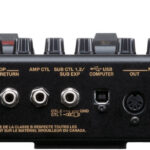Guitar Knobs are more than just decorative pieces on your instrument; they are the primary interface for shaping your guitar’s tone and volume in real-time. Whether you’re playing a roaring rock solo or crafting delicate jazz chords, understanding and utilizing your guitar knobs is crucial for any guitarist. This article will delve into the world of guitar knobs, exploring their function, types, and how they impact your sound, helping you master these often-underestimated controls.
The Function of Guitar Knobs
Guitar knobs primarily control potentiometers, often called “pots,” which are variable resistors. These components regulate the electrical signal flowing through your guitar’s circuitry. By turning a knob, you’re essentially changing the resistance in the circuit, which in turn alters aspects of your guitar’s sound. The most common types of knobs are volume and tone controls, each serving a distinct purpose in shaping your audio output.
Volume Knobs: Mastering Dynamics
The volume knob is perhaps the most straightforward control. It adjusts the overall output level of your guitar. Turning the volume knob clockwise increases the signal strength, making your guitar louder. Conversely, turning it counter-clockwise reduces the signal, decreasing the volume. Beyond simply making your guitar louder or quieter, the volume knob is a powerful tool for dynamic expression.
Guitarists often use the volume knob to:
- Control Dynamics: Seamlessly transition between rhythm and lead parts without drastic pedal adjustments. You can keep your amp at a sweet spot and use the volume knob to bring your guitar forward in the mix for solos and then dial back for rhythm playing.
- Clean Up Overdrive: Rolling back the volume knob can clean up an overdriven or distorted amp. This is because you’re reducing the input signal to the amp, pushing it out of its saturation point and resulting in a cleaner tone, even with high gain settings.
- Create Swells: By turning the volume knob up from zero, you can create gradual volume swells, a technique often used to emulate the sound of a bowed instrument or create atmospheric textures.
Tone Knobs: Sculpting Your Sound’s Color
Tone knobs are more nuanced than volume knobs and control the high-frequency content of your guitar’s signal. They work by adjusting a capacitor in the tone circuit, which acts as a filter. Turning the tone knob typically rolls off the higher frequencies, making your tone warmer, darker, and less bright.
Tone knobs are used to:
- Darken Bright Pickups: If your pickups sound too shrill or ice-picky, especially in the bridge position, rolling back the tone knob can mellow out the harsh high-end and create a smoother sound.
- Emulate Different Guitar Tones: Adjusting the tone knob can help you mimic the sonic characteristics of different guitars or pickup types. For example, rolling off the tone on a bright single-coil pickup can get you closer to a warmer, humbucker-like tone.
- Create Wah-like Effects: By quickly and rhythmically manipulating the tone knob, you can create vocal wah-like sounds, adding expressive textures to your playing.
- Jazz Tones: Jazz guitarists frequently use tone knobs to achieve warm, rounded, and mellow tones that are characteristic of the genre.
Types of Guitar Knobs and Configurations
While the basic function of volume and tone knobs remains consistent, guitars can have different knob configurations and even specialized types.
- Standard Volume and Tone: The most common setup, found on guitars like Stratocasters and Telecasters, includes one or two volume knobs and one or two tone knobs. Stratocasters typically have one volume and two tone knobs (one for the neck and middle pickups, and one for the bridge), while Telecasters usually have one volume and one tone knob controlling both pickups.
- Gibson-style Controls: Guitars like Les Pauls and SGs often feature two volume and two tone knobs, one set for each pickup. This provides independent control over the volume and tone of the neck and bridge pickups, offering greater tonal flexibility.
- Master Volume and Tone: Some guitars use a master volume and master tone configuration, where a single volume and tone knob control the overall output and tone of the entire guitar, regardless of the pickup selected.
- Push-Pull Knobs: These knobs incorporate a switch that is activated when you pull the knob up. Push-pull knobs are often used for coil-splitting humbucker pickups, allowing you to switch between humbucker and single-coil tones for increased versatility.
- Blend Knobs: Less common but found on some basses and guitars, blend knobs allow you to smoothly mix the signals from two pickups, offering a wider range of tonal colors than a standard pickup selector switch alone.
Materials and Styles of Guitar Knobs
Guitar knobs come in various materials, shapes, and styles, primarily affecting aesthetics and grip rather than the sound itself. Common materials include plastic, metal, and wood. Styles range from simple cylindrical knobs to fluted, knurled, or top-hat designs. Choosing knobs is often a matter of personal preference, but consider:
- Grip: Knurled or fluted knobs offer better grip, especially useful for quick adjustments during live performances.
- Visibility: Clear markings or indicator lines can help you quickly see your knob settings, particularly on a dark stage.
- Aesthetics: Knobs contribute to the overall look of your guitar, so choose styles that complement your instrument’s design.
Mastering Your Knobs for Better Tone
Guitar knobs are interactive controls that work dynamically with your playing and amplifier settings. Experiment with them in different musical contexts to discover their full potential. Don’t be afraid to adjust them frequently while you play to shape your tone on the fly. Learning to use your guitar knobs effectively is a significant step towards becoming a more expressive and versatile guitarist. They are your fingertips to your tone, allowing for nuanced control and a wider palette of sounds right at your instrument.

